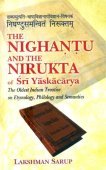Kayamana, Kāyamāna, Kaya-mana: 9 definitions
Introduction:
Kayamana means something in Hinduism, Sanskrit, Jainism, Prakrit. If you want to know the exact meaning, history, etymology or English translation of this term then check out the descriptions on this page. Add your comment or reference to a book if you want to contribute to this summary article.
In Hinduism
Ayurveda (science of life)
Source: archive.org: Vagbhata’s Ashtanga Hridaya Samhita (first 5 chapters)Kāyamāna (कायमान) refers to a “rest-house”, mentioned in verse 3.34-36 of the Aṣṭāṅgahṛdayasaṃhitā (Sūtrasthāna) by Vāgbhaṭa.—Accordingly, “[...] In groves in which the hot-rayed one is darkened by cloud-grazing huge Sal trees and Palmyra palms, (and which are) profuse in bunches of grapes clinging to spring-flowers in a rest-house [viz., kāyamāna] in which (are found) plenty of cloths besprinkled with fragrant cold water, [...]”.
Note: Kāyamāna (“rest-house”) has been transferred to the end of the preceding stanza and rendered etymologically by khaṅ lus daṅ ’thsam byas-pa—“a house made suitable for the body”. (The actual derivation remains yet to be established.) For byas-pa CD read byas-la, which seems corrupt inasmuch as a dative is incompatible with the sentence-construction.—
Kāyamāna is described by Indu as—“a kind of house built from living bamboo etc., thatched with leaves, (and) vari-coloured, or covered with patches of harita grass”—(ārdraveṇvādikalpitaḥ patrapihito vicitro haritaśāḍvalāvacchanno vā gṛhaviśeṣaḥ).

Āyurveda (आयुर्वेद, ayurveda) is a branch of Indian science dealing with medicine, herbalism, taxology, anatomy, surgery, alchemy and related topics. Traditional practice of Āyurveda in ancient India dates back to at least the first millenium BC. Literature is commonly written in Sanskrit using various poetic metres.
Languages of India and abroad
Sanskrit dictionary
Source: DDSA: The practical Sanskrit-English dictionaryKāyamāna (कायमान).—A hut made of thatch.
Derivable forms: kāyamānam (कायमानम्).
--- OR ---
Kāyamāna (कायमान).—measurement of the body.
Derivable forms: kāyamānam (कायमानम्).
Kāyamāna is a Sanskrit compound consisting of the terms kāya and māna (मान).
Source: Cologne Digital Sanskrit Dictionaries: Shabda-Sagara Sanskrit-English DictionaryKāyamāna (कायमान).—n.
(-naṃ) A hut of grass or thatch. E. kai to sound, and śānac aff.
Source: Cologne Digital Sanskrit Dictionaries: Monier-Williams Sanskrit-English Dictionary1) Kāyamāna (कायमान):—1. kāyamāna n. a hut made of grass or thatch, [Kādambarī; Vāsavadattā]
2) 2. kāyamāna mfn. ([present participle] [Ātmanepada] √3. kā?) shunning, avoiding, [Ṛg-veda iii, 9, 2],
Source: Cologne Digital Sanskrit Dictionaries: Yates Sanskrit-English DictionaryKāyamāna (कायमान):—[kāya-māna] (naṃ) 1. n. A hut of grass.
[Sanskrit to German]
Sanskrit, also spelled संस्कृतम् (saṃskṛtam), is an ancient language of India commonly seen as the grandmother of the Indo-European language family (even English!). Closely allied with Prakrit and Pali, Sanskrit is more exhaustive in both grammar and terms and has the most extensive collection of literature in the world, greatly surpassing its sister-languages Greek and Latin.
Prakrit-English dictionary
Source: DDSA: Paia-sadda-mahannavo; a comprehensive Prakrit Hindi dictionaryKayamaṇa (कयमण) in the Prakrit language is related to the Sanskrit word: Kadaśana.
Prakrit is an ancient language closely associated with both Pali and Sanskrit. Jain literature is often composed in this language or sub-dialects, such as the Agamas and their commentaries which are written in Ardhamagadhi and Maharashtri Prakrit. The earliest extant texts can be dated to as early as the 4th century BCE although core portions might be older.
Kannada-English dictionary
Source: Alar: Kannada-English corpusKāyamāna (ಕಾಯಮಾನ):—
1) [noun] a hut made of thatch.
2) [noun] a temporary roof of thatch, cloth, etc. raised on poles.
Kannada is a Dravidian language (as opposed to the Indo-European language family) mainly spoken in the southwestern region of India.
See also (Relevant definitions)
Ends with: Kancukayamana, Kantakayamana, Olokayamana, Utsukayamana, Vilokayamana.
Full-text: Kadasana, Kay, Kayamanikaniketana, Tirikupti, Vatadattika, Kan, Patalika, Ka, Vaci.
Relevant text
Search found 2 books and stories containing Kayamana, Kāyamāna, Kaya-mana, Kāya-māna, Kayamaṇa; (plurals include: Kayamanas, Kāyamānas, manas, mānas, Kayamaṇas). You can also click to the full overview containing English textual excerpts. Below are direct links for the most relevant articles:
Rig Veda (translation and commentary) (by H. H. Wilson)
Rig Veda 3.9.2 < [Sukta 9]
Haribhakti-sudhodaya (by Tridandi Sri Bhakti Prajnan Yati Maharaj)
Related products
